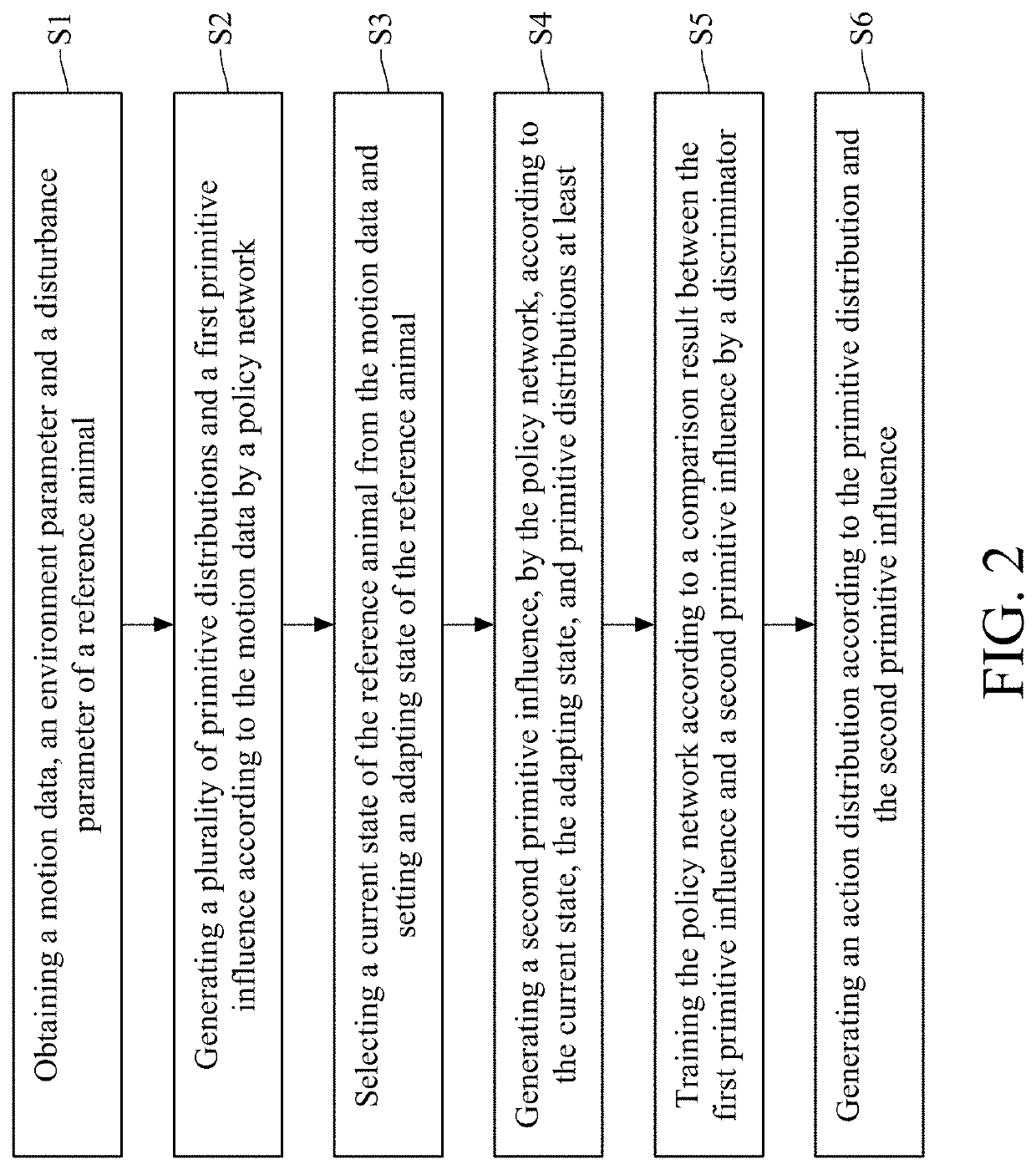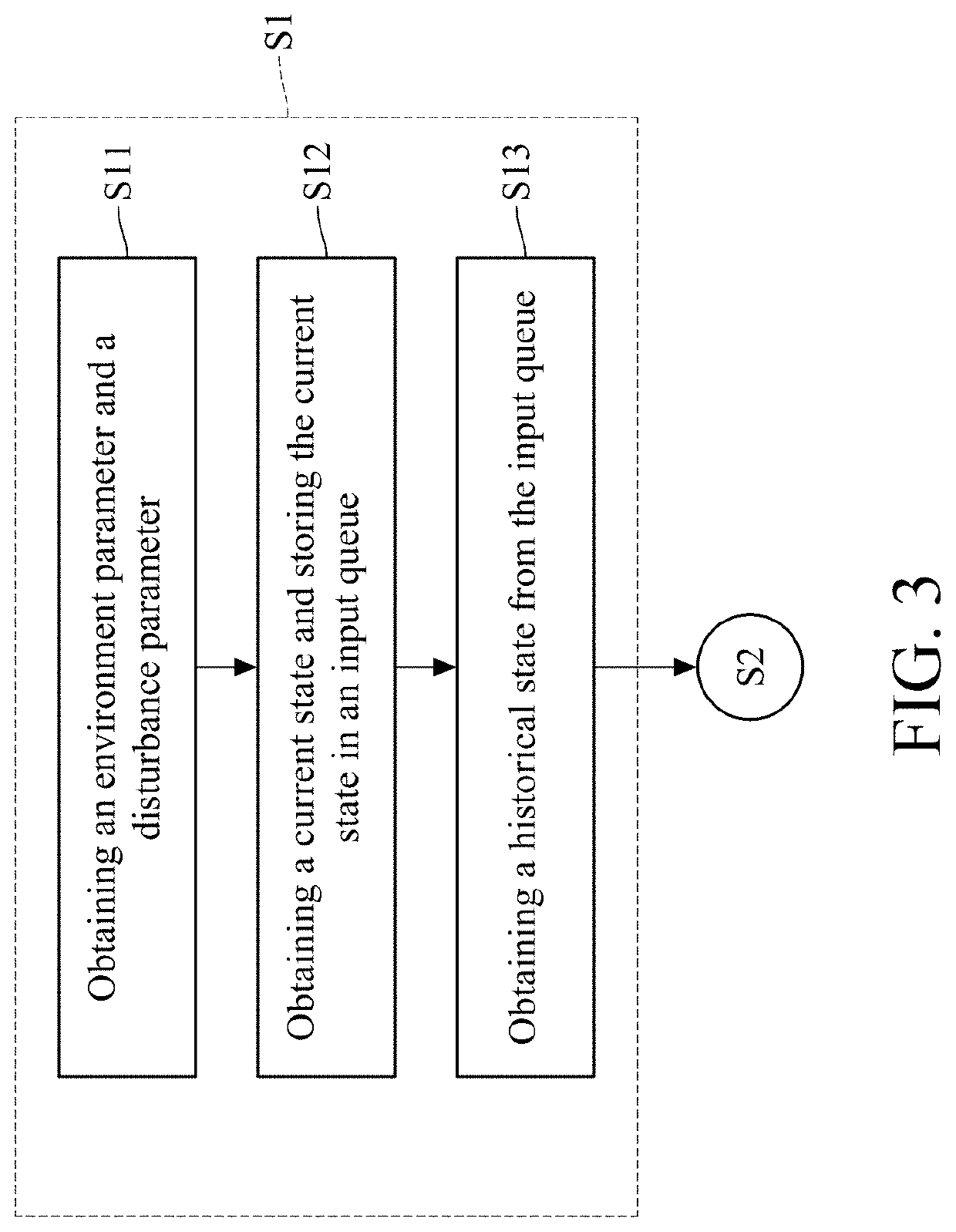Method for training virtual animal to move based on control parameter
a virtual animal and control parameter technology, applied in adaptive control, electric controllers, instruments, etc., can solve problems such as complex programming, complex programming, and inability to fully understand the robotic domain knowledge and tedious parameters of classical approaches, and achieve the effect of programming, and avoiding the need for complex programming
- Summary
- Abstract
- Description
- Claims
- Application Information
AI Technical Summary
Benefits of technology
Problems solved by technology
Method used
Image
Examples
Embodiment Construction
[0014]In the following detailed description, for purposes of explanation, numerous specific details are set forth in order to provide a thorough understanding of the disclosed embodiments. It will be apparent, however, that one or more embodiments may be practiced without these specific details. In other instances, well-known structures and devices are schematically shown in order to simplify the drawings.
[0015]The present disclosure proposes a method for training a locomotion controller of a robotic animal. Regarding a controller which controls the locomotion of the virtual animal, the present disclosure augments input parameters and output parameters during the training of this controller, and thus generating a robust controller adapted to a physical robotic quadruped. The robust controller generated by the present disclosure is also adapted to the virtual animal.
[0016]FIG. 1 is a schematic diagram of the robotic animal. The robotic animal comprises a plurality of joints as shown ...
PUM
 Login to View More
Login to View More Abstract
Description
Claims
Application Information
 Login to View More
Login to View More - R&D
- Intellectual Property
- Life Sciences
- Materials
- Tech Scout
- Unparalleled Data Quality
- Higher Quality Content
- 60% Fewer Hallucinations
Browse by: Latest US Patents, China's latest patents, Technical Efficacy Thesaurus, Application Domain, Technology Topic, Popular Technical Reports.
© 2025 PatSnap. All rights reserved.Legal|Privacy policy|Modern Slavery Act Transparency Statement|Sitemap|About US| Contact US: help@patsnap.com



